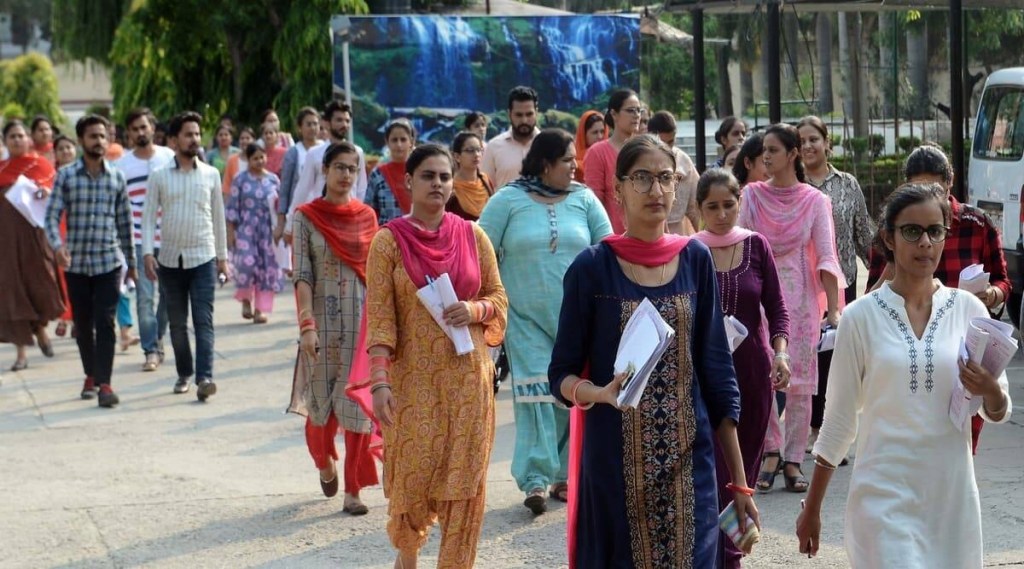Rajasthan Eligibility Exam for Teachers (REET) is the minimum required qualification in Rajasthan for a candidate to be appointed as a teacher for Classes 1 to 8th. This year the Rajasthan Board of Secondary Education is conducting the exam on July 23 and July 24. The application process began on April 18th and will continue till May 18th. Those who want to apply can apply through the official website of REET 2022 – www.reetbser2022.in. The exam will be held for the appointment of 46500 primary and upper primary teachers.
EXAM PATTERN FOR PRIMARY LEVEL TEACHERS (Classes 1-5)
REET is going to be conducted on two levels: Primary Level and Upper Primary level. The Primary Level Teachers exam is to check the eligibility of teachers for classes 1 to 5 and the Upper Primary Level teachers exam is to check the eligibility of teachers for classes 6 to 8. The duration of the Primary Level Teachers exam will be 2 hours 30 minutes. The question paper will comprise 150 questions with 1 mark each. There will be no negative marking for the wrong answers.
BREAKING DOWN THE SYLLABUS
The syllabus for the Primary Level Teacher exam constitutes of 5 subjects, namely, Child Development and Pedagogy, Language I, Language II, Mathematics, and Environmental Studies. To simplify, here is a breakup of topics under each subject for a better understanding:
Subject 1: Child Development and Pedagogy
The topics under this subject include Child Development, Role of Heredity and Environment, Meaning and Concept of learning and its processes, Factors Affecting learning, Theories of learning and its implications, How children learn, Learning process, Reflection, Imagination, and Argument, Motivation and Implications for Learning, Individual Differences, Personality, Intelligence, Understanding diverse learners, Learning Difficulties, Adjustment, Teaching-learning process, Teaching learning strategies and methods in the context of National Curriculum Framework 2005, Meaning and purposes of Assessment, Measurement, and Evaluation. Comprehensive and Continuous Evaluation. Construction of Achievement Test, Learning outcomes, Action research and Right to Education Act 2009.
Subject 2: Language I
Hindi is compulsory under this subject. The syllabus for English language includes the following:
-Unseen Prose Passage: Synonyms, Antonyms, Spellings, Word-formation, One Word Substitution, Parts of Speech, Tenses, Determiners, Degrees of Comparison
– Framing Questions Including Wh – questions, Active and Passive Voice, Narration, Knowledge of English Sounds and Phonetic Symbols
– Principles of Teaching English, Methods, and Approaches to English Language Teaching
– Development of Language Skills, Teaching Learning Materials: Textbooks, Multi-Media Materials, and Other Resources
– Comprehensive & Continuous Evaluation, Evaluation in the English Language
Subject 3: Language II
This too is a compulsory subject. The English syllabus includes
– Unseen Prose Passage: Linking Devices, Subject-Verb Concord, Inferences
– Unseen Poem: Identification of Alliteration, Simile, Metaphor Personification, Assonance, Rhyme
– Modal Auxiliaries, Common Idioms, and Phrases, Literary Terms: Elegy, Sonnet, Short Story, Drama
– Basic knowledge of English Sounds and symbols
– Principles of Teaching English, Communicative Approach to English Language Teaching, Challenges of Teaching English: Language Difficulties, Role of home language, multilingualism
– Methods of Evaluation, Remedial Teaching
Subject 4: Mathematics
Here are the range of topics to be covered under Mathematics:
– Whole numbers up to one crore, Place Value, Comparison; Fundamental mathematical operations: Addition, Subtraction, Multiplication and Division, Indian Currency.
– Concept of fraction, proper fractions, comparison of proper fraction of the same denominator, mixed fractions, comparison of proper fractions of unequal denominators, Addition and Subtraction of fractions. Prime and composite numbers, Prime factors, Lowest Common Multiple (LCM), and Highest Common Factor (HCF).
– Unitary law, Average, Profit – Loss, simple interest
– Plane and curved surfaces, plane and solid geometrical figures, properties of plane geometrical figures, point, line, ray, line segment; Angle and their types.
– Length, Weight, Capacity, Time, Measurement of area and their standard units and relation between them; Area and perimeter of plane surfaces of square and rectangular objects.
– Nature of Mathematics/Logical thinking, Place of Mathematics in Curriculum, Language of Mathematics, Community Mathematics, Data Management, Evaluation through formal and informal methods, Problems of Teaching, Error analysis and related aspects of learning and teaching, Diagnostic and Remedial Teaching
Subject 5: Environmental Studies
The subject includes topics on Family, Clothes and Habitats, Profession, Public places and Institutions, Our Culture and Civilization and Pride, Panchyat Raj and Urban Self government in Rajasthan, Transport and Communication, Personal Hygiene, Living Beings, Water, Mountaineering, Earth and Space, Concept and Scope of Environment Studies, Significance of Environment Studies, Integrated Environment Studies, Environmental Studies & Environmental Education learning Principles, Scope & relation to Science & Social Science, Approaches of presenting concepts, Activities, Experimentation/Practical Work, Discussion, Comprehensive and Continuous Evaluation, Teaching material/Aids, Problems of Teaching

